Cleaning ventilation ducts: effective methods and procedures for cleaning the ventilation duct
Heavy stale air depresses both physically and mentally. Not only the general microclimate of housing, but also the well-being of households, largely depends on the cleanliness and composition of the air in the room, right? But ventilation does not always help to establish air exchange: due to blockages in the common house ventilation duct or ventilation pipe of the additional exhaust system, the draft can significantly drop, after which the air flow will not pass properly.
Scheduled cleaning of ventilation ducts is an important procedure, on the quality and regularity of which the health and even safety of residents depends. And in places with a large crowd of people, industrial premises, medical facilities or catering establishments, the cleaning of the ventilation system should be carried out even more often and more carefully.
In this material, we will consider the reasons why you should not neglect the maintenance of the ventilation system, we will talk about effective methods of cleaning ventilation ducts and air ducts and we will figure out whether the ventilation shaft can be put in order on its own.
The content of the article:
Why do I need to clean the ducts?
Undoubtedly, clean air is one of the foundations of human life. Natural and forced ventilation promotes air exchange in the room, makes staying in the apartment comfortable and safe.
However, an increase in the amount of mud deposits inside the ducts inevitably leads to the migration of garbage and pathogens into the housing itself. Unwanted particles move into the apartment and quietly poison the health of all inhabitants.
And after removal of dirt from the walls of the mine and effective disinfection, the air entering the apartment does not bring harmful suspensions or pathogenic bacteria. Natural ventilation and forced air extraction systems begin to work more efficiently, and the equipment itself is less subject to wear and tear.

Pollution of ventilation is fraught with extremely undesirable consequences:
- Increased fire hazard due to the accumulation of sufficiently combustible particles: dust, cobwebs, and layers of fat.
- Reduced efficiency of air inflow and outflow due to reduced duct diameter.
- More rapid wear of ventilation devices due to increased load on the motors and constant overheating of the working units.
- Accelerating the formation of subsequent mud deposits: in every place where even a small amount of debris has accumulated, new dirt will settle faster.
- Deterioration of the general microclimate in the room due to poor air circulation, increased humidity and familiar temperature.
- Negative impact on human health due to an increase in the number of pathogens bacteria, fungi and allergens.
In addition to the direct impact on health, dirty air with a low oxygen content provokes a decrease in working capacity, accelerates fatigue. Therefore, it is necessary to clean ventilation ducts not only at home: in offices and other premises with a large number of people staying, more frequent scheduled maintenance activities and disinfection should be carried out.
Types of air duct contaminants
Exhaust and supply ducts and ventilation ducts are the main parts of the ventilation system that require careful maintenance.
Gradually, various contaminants settle on their surfaces, which significantly affect the functioning of the entire exhaust complex.
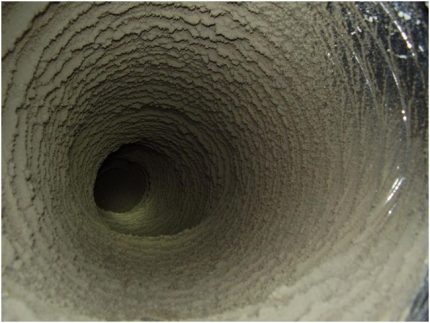
The methods for cleaning household ventilation pipes are largely dependent on the types of pollutants that have filled the air ducts.
The main ones remain:
- ordinary dust and dirtpenetrating the room and shaft from the street;
- rust and other depositswhich over time can concentrate on metal surfaces due to the increased level of humidity;
- fungi and mold;
- water coating, which is formed due to the movement of moist air masses or the formation of condensate when the temperature drops;
- fatty deposits, the source of which is heat treatment of food products;
- colony of microorganismsdeveloping in a favorable humid environment.
In specialized institutions, such as laboratories or production workshops, particles of reagents or chemicals that, due to their nature, require a special approach to neutralization and disposal can settle on the inner surface of the ventilation units.
A separate and rather complex subspecies of pollutants is sediment after fire or flood. Combustion products require immediate removal from the mine and air ducts, since inhalation of these substances is very detrimental to human health.
The aftermath of the flood are no less insidious: the abundance of moist air and condensate contribute to the growth of fungal colonies inside the ventilation system. Disputes easily move through the air ducts, penetrating into residential premises, after which the development of mold continues directly in the apartment - on the walls, ceiling of living rooms.
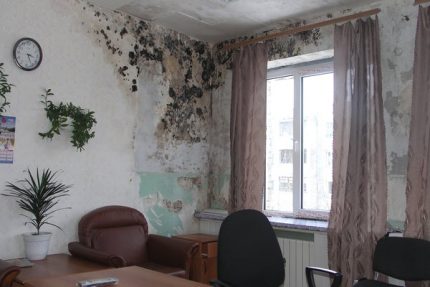
Exhaust ventilation ducts are polluted more slowly than supply air ducts. In the latter, in addition to street dust, allergens are delayed, for example, pollen, chemical compounds from exhaust gases or emissions from industrial enterprises.
The most polluted ventilation units
The ducts used to build the ventilation system vary in size, material of manufacture, shape, design and method of connection. However ventilation pipes they have a sufficiently large cross section and a direct direction, and air with undesirable suspensions passes in these areas most easily. Therefore, the direct ventilation duct is less prone to clogging.
Much more difficult to deal with dirt in certain nodes of the system, which due to their configuration trap more garbage.
These items include:
- ventilation bends;
- tees and crosses;
- flexible inserts and rectangular ducks;
- areas near filters;
- valves
- diffusers and gratings;
- adapters, etc.
It is these elements that need to be given maximum attention during cleansing.
It is worth considering that it is quite difficult to process these zones without special equipment, so you cannot do without calling a team of specialists.
Signs of a need to clean the ventilation ducts
Visual inspection using special devices for video surveillance is the surest way to personally verify the amount of garbage and the need to clean the ducts.
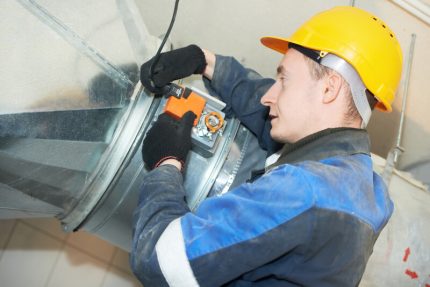
However, even without special equipment, one can understand that the ventilation system needs to remove accumulations of dirt.
The following signs indicate that the air ducts need to get rid of dust, grease and other pollutants:
- The indoor climate has worsened - stuffiness is felt.
- The power generated when opening the windows and doors of drafts has decreased significantly.
- Dust began to accumulate on furniture and other surfaces more often.
- The draft in the ventilation duct dropped significantly.
- On the ventilation grill and cobwebs and traces of dust appear around the area.
If the homeowner observes at least part of the above phenomena, it is worthwhile to conduct a visual diagnosis of ventilation ducts. This can be done through the inspection hatch or, if it is missing, by removing the ventilation grill.
Methods for cleaning ventilation ducts
Most owners prefer to do home maintenance on their own, without the help of specialists. However, cleaning the ducts requires both a certain skill and a special and quite expensive equipment. Therefore, owners who are thinking about how to clean their home ventilation duct should still contact a company that has the appropriate license and permission to carry out these works.
Specialists organize the procedure in a truly high-quality and efficient way, and also take samples of pollution. Analysis of the samples will determine the presence of pathogenic flora in the system and select the optimal disinfection agent.
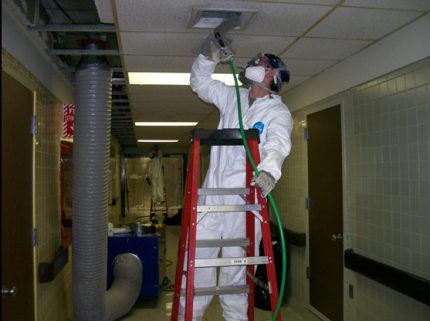
Using video equipment for channel diagnostics will make it possible to choose the most suitable way to clean mines.
Method # 1 - mechanical cleaning
An effective method of purification, most often used to service vertical channels.It is carried out due to the physical scraping of deposits from the walls of the ducts.
Convenient for removing simple dirt:
- dust
- cobwebs;
- small stones;
- waste products of birds and rodents.
In fact, the purification procedure can be carried out either by a fully manual or automated method. The method is dry, as it does not involve the use of detergents and any other chemistry.
However, this method is not very suitable for neutralizing body fat, since the accumulation of this pollutant is very difficult to remove from the surface of the channel. Another disadvantage of this method is that it is extremely inconvenient to use in ventilation systems with a complex configuration, an abundance of bends and branches.
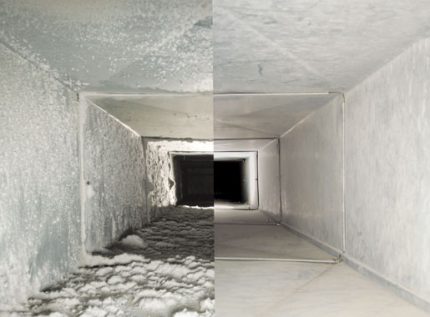
For mechanical cleaning, both simple and fairly complex devices are used:
- Wire rope well removes deposits from surfaces. To increase efficiency, the design can be supplemented by an electric drive, due to which the removal of litter is more intense.
- Combination device with brushes and vacuum cleaner makes it possible to simultaneously remove plaque and absorb its particles, so that they do not spread through the ventilation channel.
If mechanical cleaning occurs without the use of a vacuum cleaner, scraped off rubbish can be removed naturally, in which the airflow carries pollution with it.
When cleaning vertical channels in residential buildings using a ruff and a kettlebell on a cable, debris can fall into a special mine pocket or settle in the opening at the entrance to the apartment. In the latter case, it must be collected in order to avoid the spread of dirt in the housing. Therefore, the use of an additional vacuum unit, which is separately connected to the duct and sucks out all the dirt, remains more efficient.
In more detail the process of cleaning the ventilation shafts in an apartment building we reviewed here.
Method # 2 - dry cleaning with foam
The method is effective to neutralize fatty deposits, which are difficult to mechanical impact. The method is most in demand in catering establishments in which complex ducts for cooker hoods are most susceptible to constant settling of fat particles.
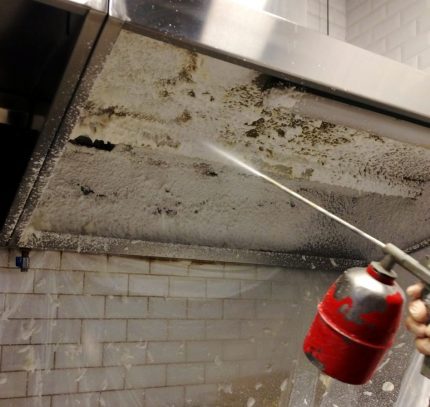
In the process of cleaning, a special composition is sprayed inside the duct that breaks down the fat. The plaque is stratified and torn off the surface, after which its particles are carried away by air masses or sucked off with a vacuum cleaner.
As detergents, fairly aggressive alkaline compounds are used. Some of them, in addition to cleaning, have disinfecting properties. The concentration of the reagent is selected by a specialist, starting from the degree of contamination of the system.
If the foam does not kill germs, additionally during the cleaning process duct disinfection. The choice of disinfectant also remains with the employee of the company. For maximum efficiency of the pathogen elimination procedure, it is desirable to test contaminants in order to determine the types of microorganisms inhabiting the air ducts.
Method # 3 - combined cleansing method
The method involves the use of mechanical devices + special cleaning foam. Such a tandem can achieve good results in the presence of various types of pollution.
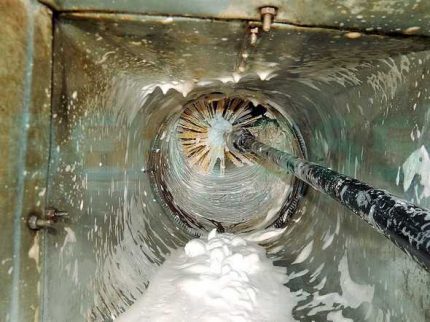
The procedure can be either completely manual or automated, in which vacuum devices are used to extract residual dirt.
Method # 4 - cryogenic blasting
At its core, this relatively new method is a form of chemical purification. However, blasting deserves special attention due to its effectiveness and gentle action. The process involves the so-called dry ice, which has optimal properties for cleaning the walls.
The unit supplies dry ice to the duct. The substance, in contact with the walls of the ventilation duct, begins to evaporate almost instantly, during which microexplosions are produced. Thanks to them, the deposits of contaminants are separated from the walls, however, the surface of the mine itself is not damaged. Dry ice during decay is converted to carbon dioxide, which leaves the channel with a stream of fresh air.
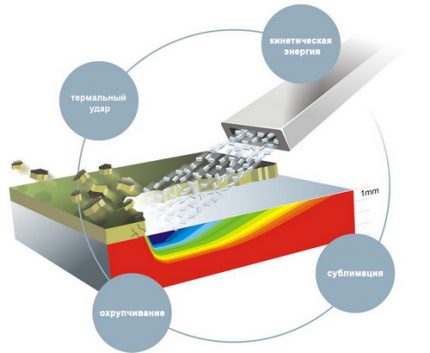
Gentle cleaning, safety and environmental friendliness make cryogenic blasting the best choice for use in residential premises and catering establishments.
Duct cleaning technology
In fact, cleaning the ventilation ducts and ducts takes place in two stages. The first is held inspection of internal surfacesto assess the degree of contamination of the mine. For this, special equipment is used, equipped with cameras and small spotlights.
The image is displayed on a computer screen or other equipment, so the operator can evaluate the front of the upcoming work. Additionally, garbage samples are collected for subsequent analysis for the presence of pathogenic organisms.
In the second stage, events are directly carried out cleaning work, the course of which depends on the chosen method of purification. When mechanically cleaning the vertical channels of a residential building, specialists launch a cable with a weight and a special ruff into the shaft, which effectively removes deposits and large blockages from the walls of the duct. Before connecting special equipment, workers block the valves, inlet and outlet openings of the ventilation system.
If vacuum installations are used in the cleaning process, they are connected to one of the duct outlets. After this, the cleaning procedure begins, which may include only mechanical action or the use of chemical detergents.
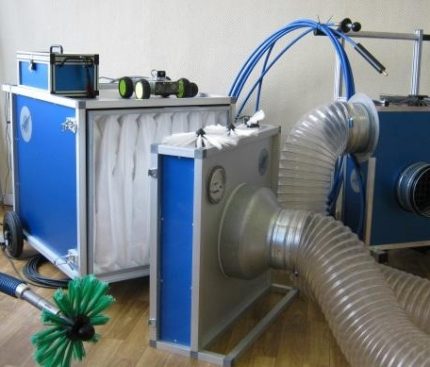
If necessary, after cleaning, disinfection is carried out by means selected by a specialist. These can be preparations based on peracetic acid, hydrogen peroxide or other substances that neutralize pathogens.
How to clean the ventilation duct yourself?
Self-cleaning the air ducts in a residential building is a rather complicated procedure, the implementation of which is still better to entrust to professionals. It is extremely difficult for a homeowner without special equipment to qualitatively remove pollution and not violate the integrity of the system.
Also, ventilation complexes are common property, therefore, the management company should deal with their maintenance. Physically, a resident can only clean the mine section adjacent to his apartment, which will not be enough to restore the full functioning of the ventilation.
However, it is still possible to carry out part of the work.First, it is necessary to warn the neighbors about the upcoming cleaning, as during the work noise will be generated, and particles of garbage can fly out into the living room from the ventilation openings on floors below.
Before starting work, it is also necessary to take care of personal protective equipment: a respirator, durable gloves, and glasses. It is better to cover the floor under the ventilation hole with a rag, since during work it is possible to spill a large amount of debris.

The procedure for cleaning the ventilation duct is as follows:
- Remove the ventilation grill or remove exhaust fan. Rinse the grill or clean the hood according to the instructions.
- Visually inspect the ventilation duct by illuminating the cavity with a flashlight.
- If large debris, such as stones, is present in the mine, carefully remove it by hand.
- Using a metal brush or spatula, gently scrape off deposits from the walls of the shaft.
- Remove any residual dirt with a vacuum cleaner without using brushes. However, this stage is rather unsafe, below we will explain why.
- Wipe the cleaned walls with a damp rag.
- Replace the ventilation grill or reassemble the exhaust fan.
Using an ordinary household vacuum cleaner in the process of cleaning the ventilation duct is an extremely dubious step, which most apartment owners still resort to. The danger of such cleaning is that bacteria and fungi from the mine can easily bypass the filters of the equipment and end up in large numbers in the apartment. It is also forbidden to use the vacuum cleaner in the blowing mode, since all the rubbish will simply get into other people's apartments through ventilation holes on other floors.
In addition to blowing with a vacuum cleaner while self-cleaning the ventilation duct, it is forbidden to use special chemicals for cleaning and disinfection. Without knowledge and skills, an ordinary user cannot correctly calculate the concentration suitable for spraying. Too aggressive composition can damage the walls of the ducts or cause poisoning of residents. The only permissible substance for household cleaning is dry ice.
Conclusions and useful video on the topic
In the video below, the wizard details the types of ducts and types of connecting fittings:
The process of cleaning ducts using the electric flexible shaft technique is shown below:
A detailed procedure for all stages of cleaning the ventilation in the food block is shown by the specialists of the cleaning company:
Household ventilation ducts should be cleaned at least once every one to two years. For industrial enterprises, catering establishments, scheduled cleaning should be organized several times a year. It is impossible to neglect this important procedure, since deposits of dirt in the ventilation duct can extremely negatively affect the health of residents, and the operation of exhaust or climate technology.
However, due to the complexity of the design analysis and the extremely low quality of self-cleaning, it is better to trust the service of air ducts to employees of specialized companies. Serious equipment, effective reagents for cleaning and disinfection, experience and skills allow teams to quickly and efficiently cope with all types of pollution in the ducts.
Have you been doing duct cleaning yourself recently and want to tell other users about this? Or are you an employee of a company specializing in the cleaning and disinfection of ventilation and air conditioning systems, and want to supplement the above material with useful information? Write your comments and recommendations, ask questions - the comment form is located below.

 Terms and procedure for cleaning ventilation chambers and ducts: norms and procedure for cleaning
Terms and procedure for cleaning ventilation chambers and ducts: norms and procedure for cleaning 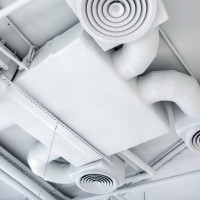 Plastic ducts for ventilation: varieties, recommendations for selection + ventilation duct arrangement rules
Plastic ducts for ventilation: varieties, recommendations for selection + ventilation duct arrangement rules 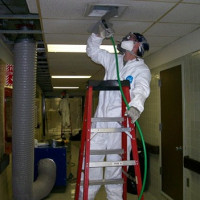 Equipment for cleaning ventilation: varieties + how to choose the best on the market
Equipment for cleaning ventilation: varieties + how to choose the best on the market 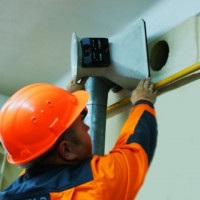 Ventilation cleaning: cleaning the ventilation ducts in an apartment building
Ventilation cleaning: cleaning the ventilation ducts in an apartment building  How to clean the ventilation in the apartment with your own hands: suitable tools and work procedures
How to clean the ventilation in the apartment with your own hands: suitable tools and work procedures  Do-it-yourself ventilation of the barn: types of systems, air exchange rates + system arrangement
Do-it-yourself ventilation of the barn: types of systems, air exchange rates + system arrangement  How much does it cost to connect gas to a private house: the price of organizing gas supply
How much does it cost to connect gas to a private house: the price of organizing gas supply  The best washing machines with dryer: model rating and customer tips
The best washing machines with dryer: model rating and customer tips  What is the color temperature of light and the nuances of choosing the temperature of the lamps to suit your needs
What is the color temperature of light and the nuances of choosing the temperature of the lamps to suit your needs  Replacement of a geyser in an apartment: replacement paperwork + basic norms and requirements
Replacement of a geyser in an apartment: replacement paperwork + basic norms and requirements